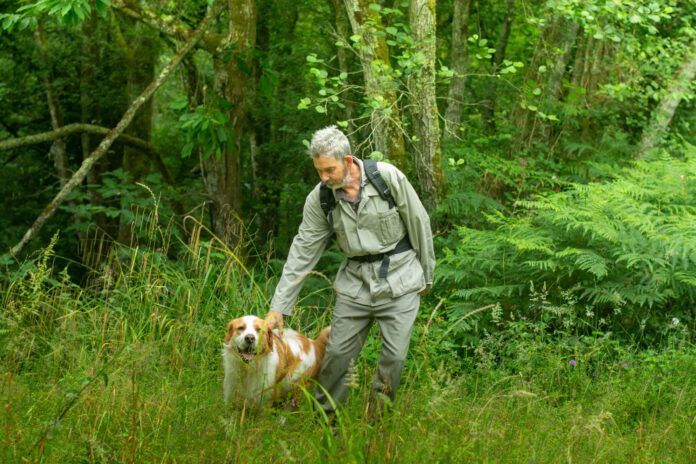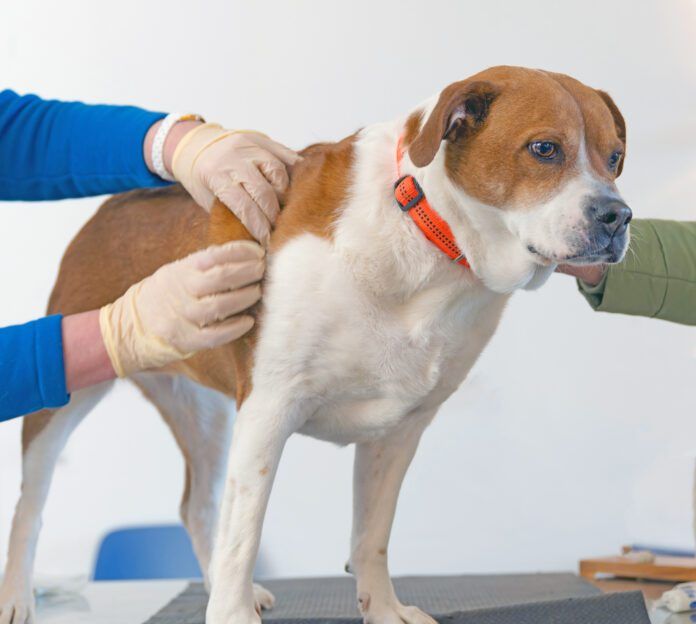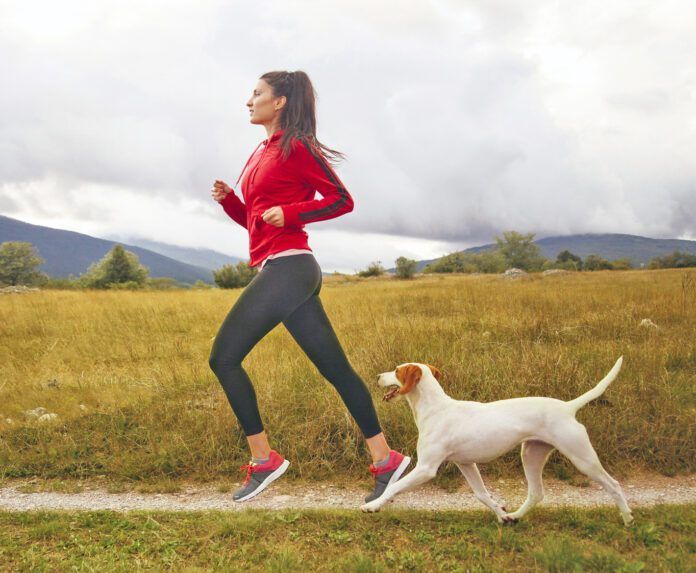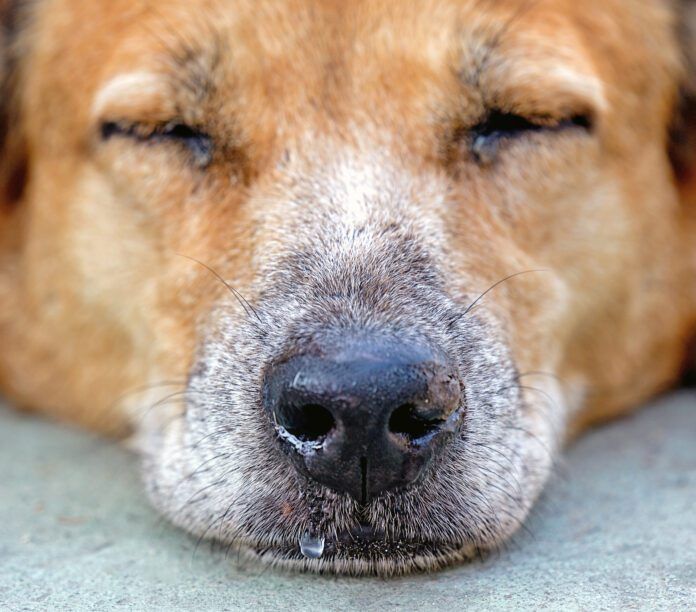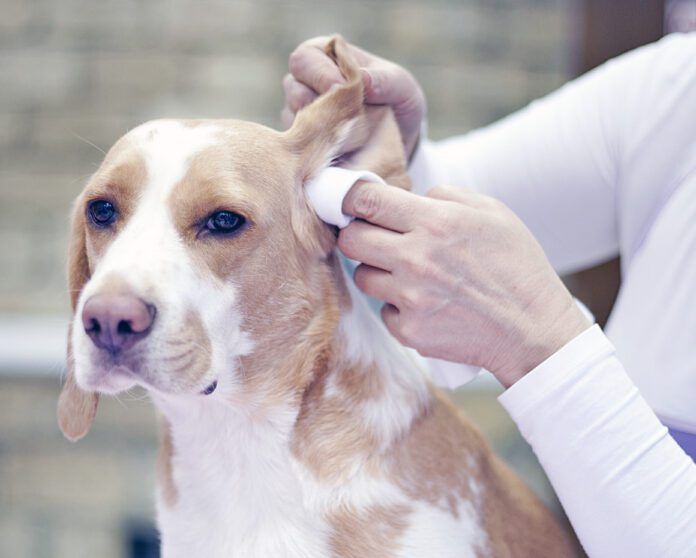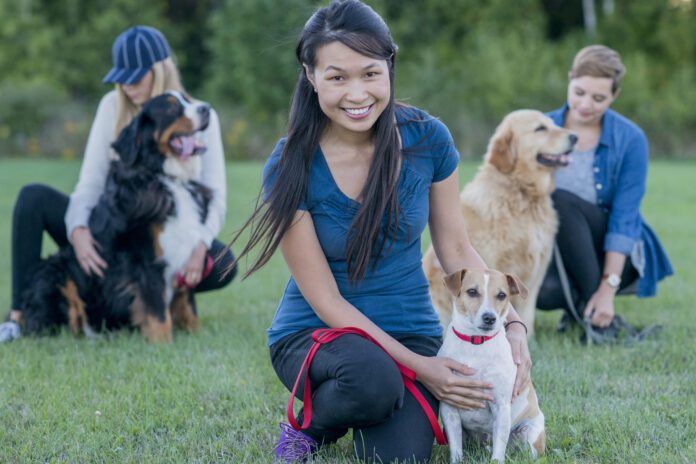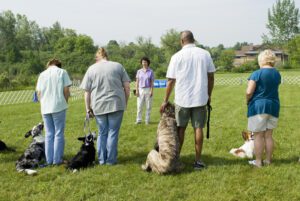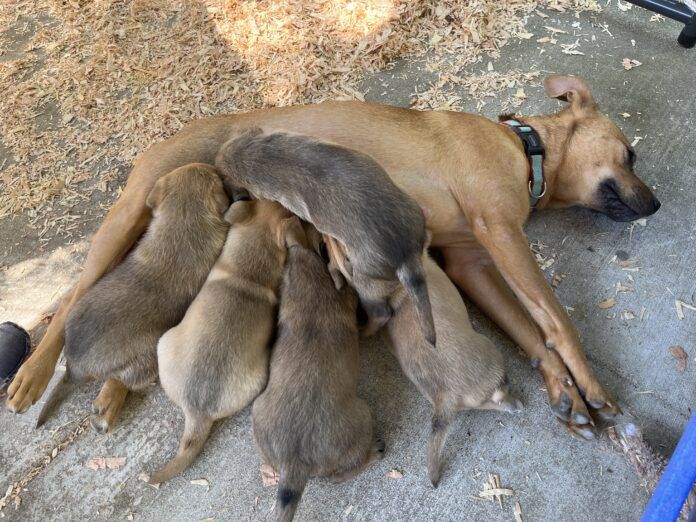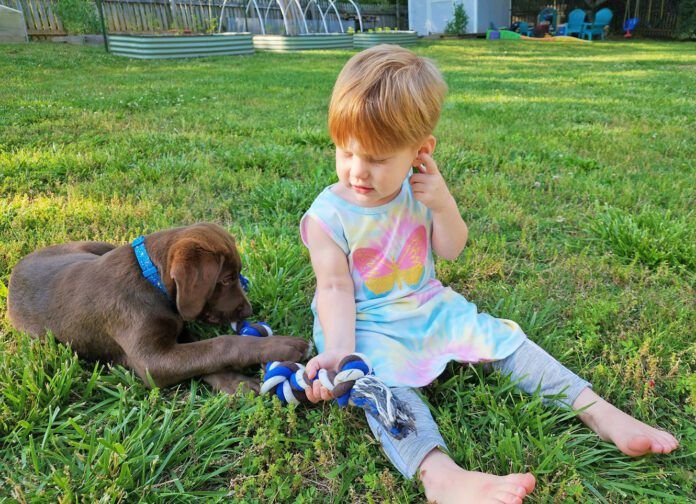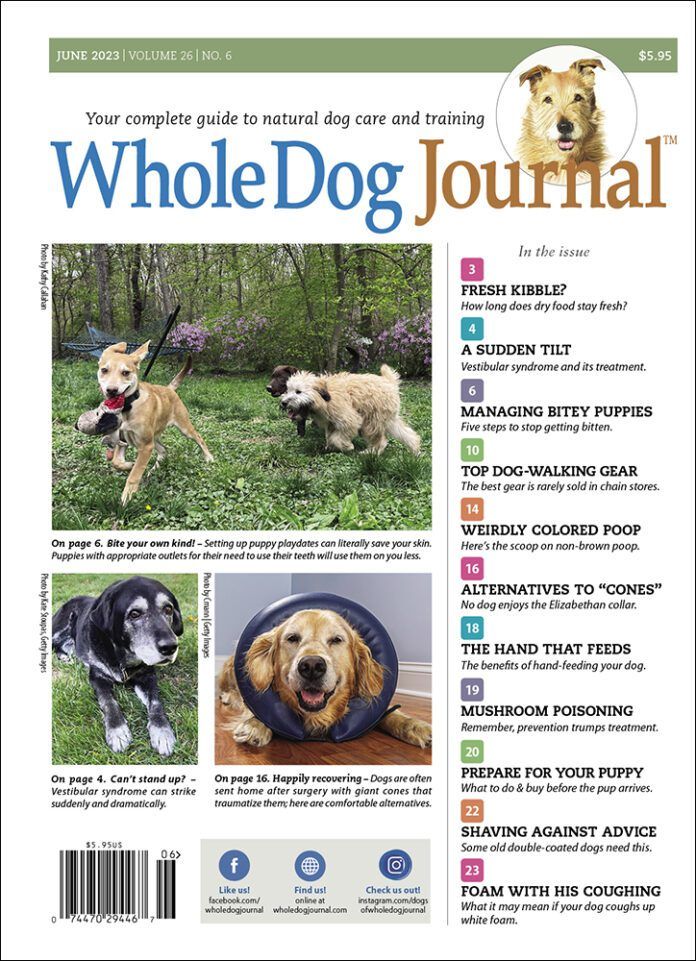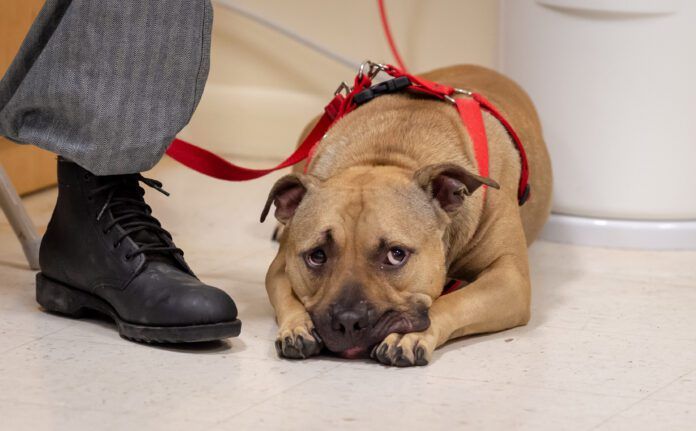Each spring and summer brings increased chatter on the internet about tick-borne diseases affecting dogs, particularly Lyme disease in dogs. For those of us who live in the Northeastern, Mid-Atlantic, upper Midwestern, or Pacific Coast states though, Lyme disease is a year-round problem.
The most prevalent cause of Lyme disease in dogs (and humans!) is the spirochete bacteria Borrelia burgdorferi, which is transmitted through the bite and feeding of infected black-legged ticks. These ticks remain attached to their host for two or more days. If a tick is a carrier of B. burgdorferi, it typically begins transmitting the bacteria to its host after being attached for 24 to 48 hours.
Symptoms of Lyme disease in dogs
Only about 5% to 10% of dogs who have become infected with B. burgdorferi will develop symptoms of Lyme disease. Of these dogs, most will develop Lyme arthritis. The first symptoms of this are acute lethargy, lameness in one or more limbs, fever, one or more swollen joints, and enlarged lymph nodes. These dogs feel lousy; they have no energy and typically will have no desire to eat or drink.
A smaller percentage of dogs who have become infected with B. burgdorferi will develop Lyme nephritis (inflammation of the kidneys). Dogs with Lyme nephritis may show a chronic history of weight loss, lethargy, vomiting, and inappetance. Their water intake gradually increases over a period of two or more weeks and they urinate more often. In advanced stages, dogs may develop edema (puffiness) of their limbs.
Contrary to what is seen in humans, dogs do not develop a bulls-eye rash after a tick bite that transmits B. burgdorferi. Dogs may develop a small bulls-eye lesion on their skin after being bitten by ticks, mosquitoes, or black flies. This is related to the insect bite itself, not the transmission of tick-borne disease.
Treatment of Lyme disease in Dogs
Dogs with suspected Lyme arthritis are typically treated with an antibiotic called doxycycline for 30 days. An analgesic such as gabapentin may be prescribed to alleviate the joint pain. Response to therapy is typically rapid, with most dogs showing resolution of their symptoms in the first 24 to 72 hours of starting doxycycline.
Unfortunately, a complete course of doxycycline may not clear all of the Lyme bacteria from your dog’s body. B.burgdorferi has been shown to be very good at evading the immune system and may hide in select body tissues for years after treatment.
Lyme nephritis is a condition that is not well understood. It is suspected that, in a valiant attempt to clear B. burgdorferi from the body, the immune system causes irreparable damage to the kidneys. The portion of the kidney that is damaged is the glomerulus – the filtration unit of the kidney. This condition is called immune-complex glomerulonephritis (ICGN).
Dogs with Lyme nephritis are treated like any other dog who has ICGN, regardless of the cause. Treatment may include hospitalization with IV fluids and medications for high blood pressure, protein loss through the kidneys, vomiting and nausea, and prevention of abnormal clotting, in addition to treatment with doxycycline and an immunosuppressant. Unfortunately, the prognosis for dogs with Lyme nephritis is poor.
How Lyme Disease Is Diagnosed
Diagnosis of Lyme disease is challenging. B. burgdorferi travels through a dog’s skin and other tissues, like joints and tendons. Although B. burgdorferi can rarely be found in the bloodstream, this does not appear to be its preferred mode of travel in the body.
Since B. burgdorferi is rarely found in the bloodstream, the blood tests currently available for Lyme disease instead measure a dog’s antibodies to B. burgdorferi. A positive “Lyme test” – more accurately, a B. burgdorferi antibody titer test – tells us that a dog has been exposed to B. burgdorferi and has developed antibodies to that bacteria, but does not tell us if a dog’s symptoms are being caused by Lyme disease.
A different type of test looks for B. burgdorferi itself. This bacteria prefers to live in a dog’s body tissues – like skin, joints, and tendons – so we can use a PCR (polymerase chain reaction) test that can detect the genetic material from B. burgdorferi in a tissue sample. Collection of these samples is a little more invasive than obtaining a blood sample. It involves taking a biopsy sample of skin or other tissue or obtaining a sample of joint fluid from an affected joint. Skin biopsy samples need to be obtained from the site where the tick bit your dog. Since many tick bites go undetected, it may be nearly impossible to know where to obtain a skin biopsy sample. Joint fluid can be obtained from the joint that is sore and swollen. A positive PCR test confirms a definitive diagnosis of Lyme disease.
Many veterinary hospitals use rapid blood tests for Lyme disease that provide a result in about 10 minutes. These tests detect antibodies that your dog has developed to B. burgdorferi. If your dog is showing symptoms of Lyme disease and he tests positive on the rapid blood test, your veterinarian may draw the conclusion that your dog’s symptoms are being caused by an active Lyme infection and prescribe a course of doxycycline. If your dog’s symptoms resolve within 24 to 72 hours of starting doxycycline, his symptoms were most likely caused by Lyme disease.
If symptoms continue – your dog does not improve after 72 hours of doxycycline – then there is likely a different cause for his symptoms. The positive test indicates that your dog was exposed to B. burgdorferi and mounted an immune response to that infection at some point, but if doxycycline did not reduce or eliminate your dog’s symptoms, they are very likely being caused by something else. Your veterinarian may want to re-examine your dog and order additional diagnostics.
Tick analyses have shown that many ticks carry more than one disease-causing bacteria. If your dog tests positive for Lyme, talk to your veterinarian about testing for other tick-borne diseases that are common in your area.
What if a rapid blood test is positive – again, meaning that your dog was exposed to B. burgdorferi and developed antibodies to that bacteria – but has no symptoms whatsoever? It turns out that most dogs who are exposed to B. burgdorferi are subclinical for Lyme disease; they never show symptoms of Lyme disease but they may test positive on their annual combination heartworm/tick test.
Treating a seropositive, nonsymptomatic dog with a course of doxycycline is controversial; there is no consensus in the veterinary community on whether treatment might possibly be beneficial or is an unnecessary use of antibiotics that can contribute to antibiotic resistance. If your dog meets this description, discuss the pros and cons of treatment with your veterinarian.
Borrelia burgdorferi, the bacterial spirochete that causes Lyme disease, is transmitted through the bite and feeding of the black-legged tick. There are two species of the black-legged tick. In the Northeastern, Mid-Atlantic, and upper Midwestern states, Ixodes scapularis is responsible for transmitting Lyme disease. In the Pacific Coast states, Ixodes pacifica is the culprit.
Black-legged ticks have a two-year, four-stage life cycle. The first stage is the egg that is laid by an adult female tick in the spring of year one. Each egg develops a larval tick that hatches from the egg in summer. The larval stage of the tick is extremely small – about the size of a poppy seed – and has six legs.

Larval ticks need a blood meal from a suitable host to complete their transition to the next life stage. Both species of Ixodes larval ticks feed on mice, squirrels, shrews, and birds. Ixodes pacifica larval ticks also feed on lizards. The white-footed mouse is the reservoir for the bacteria Borrelia burgdorferi. Larval ticks that feed on an infected white-footed mouse become infected with and carriers of B. burgdorferi.
Once the larval ticks have obtained a blood meal, they morph into nymph ticks between the fall of year one and the spring of year two. Nymphs are about twice the size of larval ticks (still really small!) and have eight legs.
Nymph ticks need a blood meal to morph into an adult tick, so they look for something a little bigger – like dogs, cats, and humans. If the nymph tick picked up B. burgdorferi when it was a larval tick, that nymph tick can transmit B. burgdorferi to its new host.
Nymphs morph into adult ticks in the fall of year two. Adult ticks are about twice the size of nymph ticks. They look for their final blood meal from a suitable host (such as deer, humans, and dogs) before winter sets in. Again, if the adult tick was a carrier for B. burgdorferi as a nymph, the adult tick can transmit B. burgdorferi to its new host.
Adult ticks mate while on deer in the spring. The male tick dies after mating. The female tick leaves the deer host and lays thousands of eggs in the environment. The female tick dies after laying her egg cache.
During the winter months, nymph and adult ticks will seek shelter in leaf litter, shady places, and under snow. If the ambient temperature rises above 37 degrees Fahrenheit and their snow shelters have melted, nymph and adult ticks that did not find a suitable host in the fall will actively seek a host for a blood meal in the winter.
How to Prevent Lyme Disease
There is no way to completely prevent your dog from developing Lyme disease. But you can reduce the risk of him being exposed to B. burgdorferi with the following three-pronged approach:
- Use a high quality flea/tick preventative all year long. Nymph and adult ticks can become active in winter when the ambient temperature is above 37 degrees Fahrenheit and there is no snow on the ground.
- Check your dog nightly for ticks. Ticks that are removed within 24 hours of attaching to your dog are less likely to transmit burgdorferi.
- Talk to your veterinarian about vaccinating your dog for Lyme disease if you live in a region where Burgdorferi is prevalent. Most Lyme vaccines are more than 90% effective at preventing Lyme disease. But like most vaccines, their effectiveness can wane over time.
Lyme and other tick-borne diseases are here to stay. But we can take preventive measures to minimize our risk of exposure, both for us and our dogs.
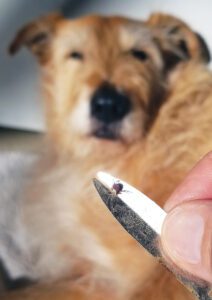
Contrary to popular belief, ticks do not jump, fly, or fall from trees. They hang out on blades of grass, at the top of leaf litter, or on the tips of shrubs. They hang onto vegetation with their rear legs and wave their front legs while waiting for a suitable host to come along. This activity is called questing.
When you or your dog brushes up against the tick’s hangout, the tick grabs on to you or your dog with their front legs. Then the tick spends 30 minutes to two hours or more walking all over their new host’s body, looking for the perfect spot to insert their mouthparts and begin taking a blood meal. This is often in a warm location on the body, such as the armpits, groin, neck, or ears.
Wearing clothing that has been treated with permethrin can help prevent ticks from hitching a ride on you and your dog. Permethrin causes a condition called “hot-foot” with ticks. A tick’s legs have a burning sensation when they make contact with permethrin, and they run away as quickly as possible.


